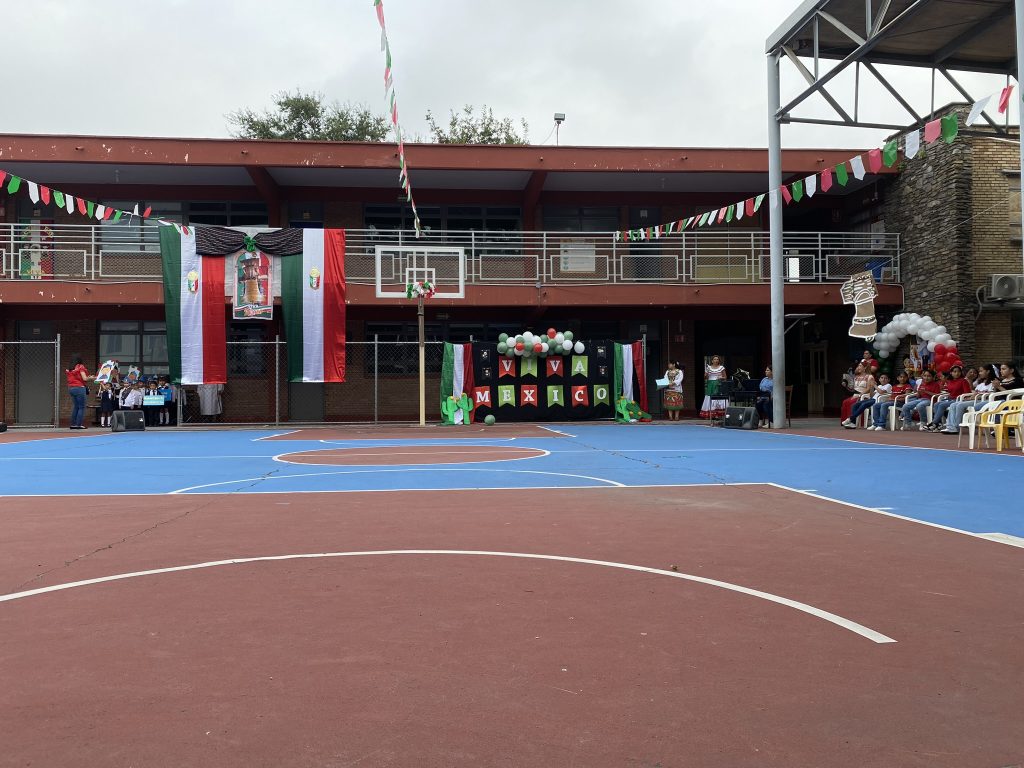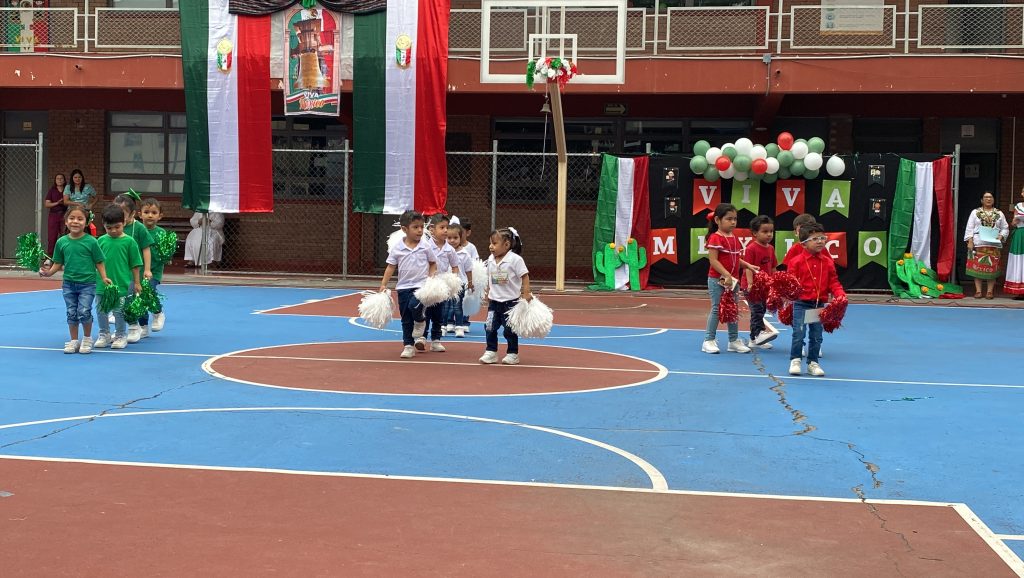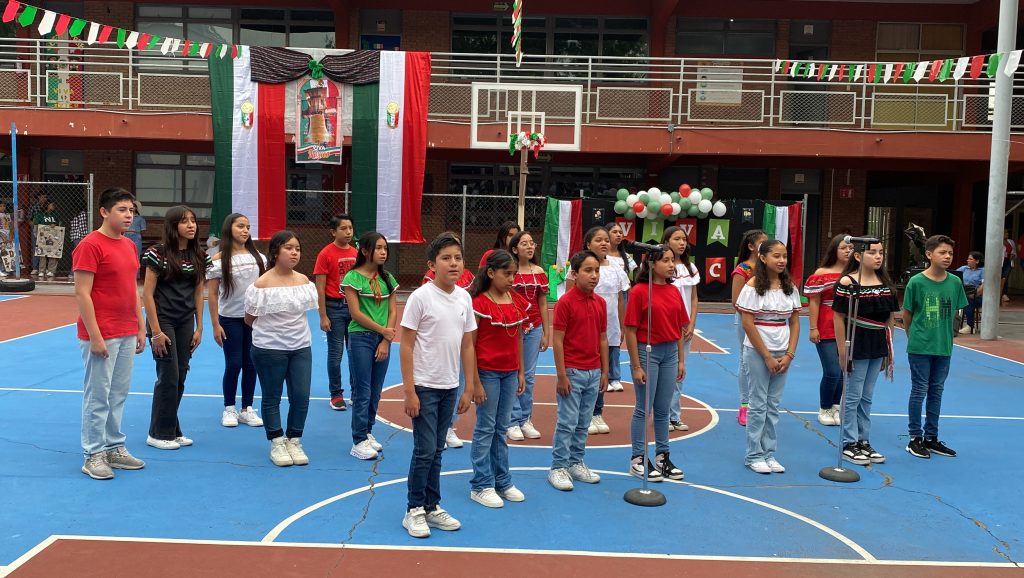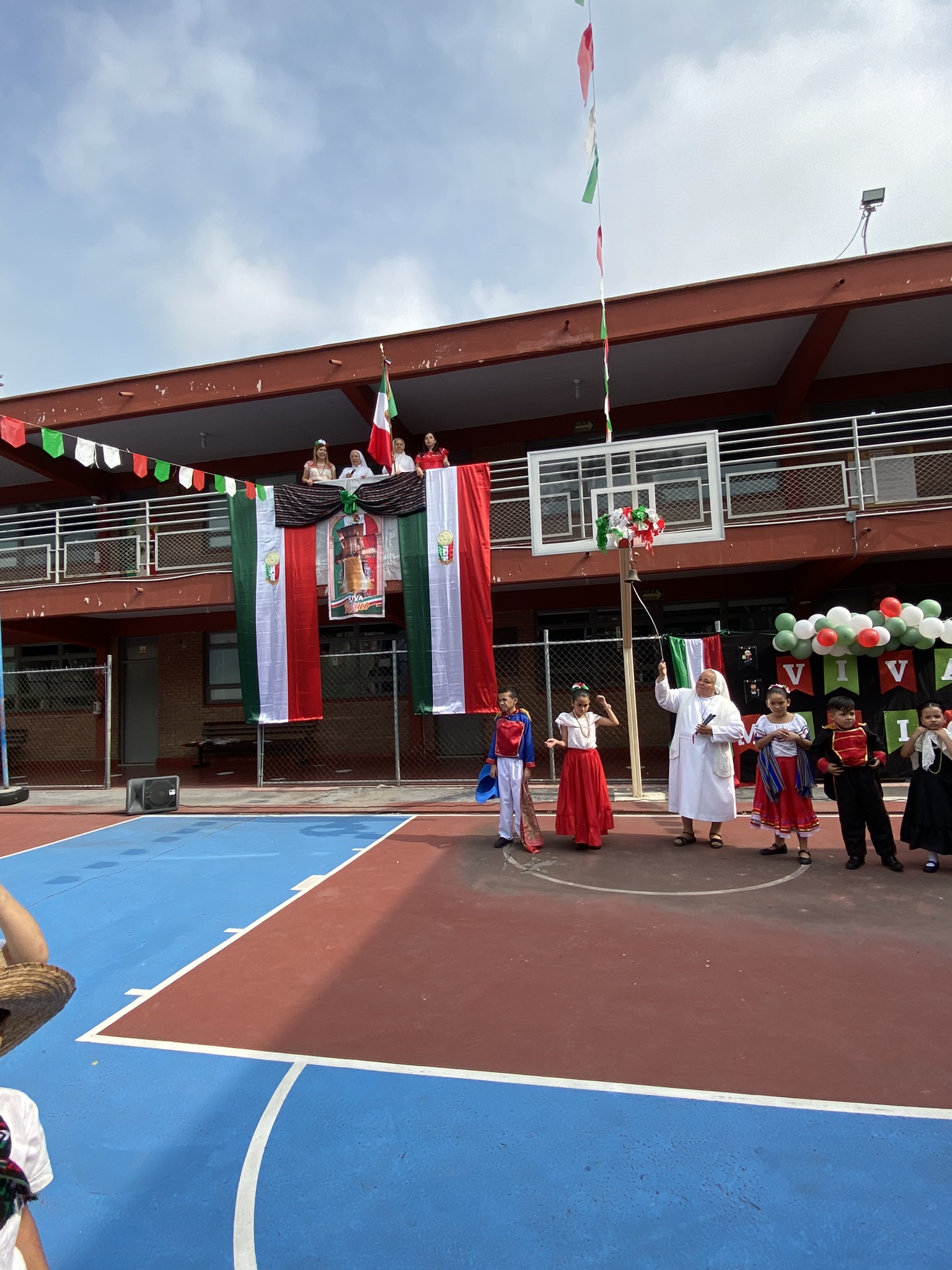The Ortigosa Hospice has over a century of service to others,
and is the oldest institution of its kind still operating in Monterrey.
Its creation and operation have been possible thanks to the contributions and efforts
of men and women who have dedicated their lives to this altruistic work. Its greatest achievement
is that within its walls, thousands of disadvantaged girls have received the opportunity
for development and happiness that circumstances seemed to deny them.
Acting as his executor, Valentín Rivero fulfilled Don León's wishes by establishing a nursing home for the elderly, run by the Mothers of the Incarnate Word, officially opening its doors in 1889. In the 1920s, the country was engulfed in a new violent movement called the "Cristero War," whose greatest impact on this institution was the expulsion of the nuns who ran it. Despite this, it was decided that the Ortigosa would not close, and a group of women selflessly accepted the challenge of managing it took over.
It also suffered a severe decline in private contributions, as its main patrons were local businessmen, who endured very difficult times during the Revolutionary War. One of the main patrons who supported the Hospice from its founding was businessman Isaac Garza, who was committed to its administration and financial support until his death in 1933.
The armed conflicts seemed to have come to an end, but in the 1920s, the country was engulfed in a new violent movement called the "Cristero War." As in the rest of the country, several Catholic churches in Monterrey were ordered to close, including the chapel inside the Hospice. But the greatest impact on the institution came when the nuns who served at the Ortigosa Hospital were expelled. Unfortunately, they had to pack their bags and return to Spain, forced to separate themselves from their work. However, it was decided that the Hospice would not close, and a group of women took on the challenge of managing it.
Later, the Ortigosa Hospice was taken over by the members of the Sembradores de Amistad Club, founded in 1936 by a group of Monterrey businessmen, including Eugenio Garza Sada, Roberto Garza Sada, Manuel L. Barragán, Antonio L. Rodríguez, and Francisco G. Sada. Taking up his father's philanthropic activities, Eugenio became the head of the Hospice's board of trustees, providing constant support for 40 years, from 1933 until his death in 1973.
It is worth noting that in 1947, the possibility of returning the hospice to the hands of a group of nuns was considered, considering that the country's political situation had normalized. It was decided that the Servants of the Sacred Heart of Jesus and the Poor, a congregation founded by Father San José María Yermo y Parres, would be in charge. Taking advantage of the situation, the institution's purpose was changed from a nursing home to care for abandoned, orphaned, orphaned girls, or those with serious family problems.
In keeping with its new vocation, in the following years the Hospice began to be called the Ortigosa Home. They quickly began to admit their first girls, while also caring for the last remaining elderly adults in the home, although from that year on they accepted only girls. The Home offered the little girls a decent place to live, and to directly address their education, a kindergarten and an elementary school were established, offering classes up to fifth grade. However, since these schools were not incorporated into the Ministry of Public Education, the option was to obtain scholarships for the girls to study at the Juana de Arco School, a subsidiary of the Labastida School, for sixth grade.
In the 1950s, the number of girls began to grow, and their educational needs also increased. For this reason, the first secondary school was established at the Home in 1958, and in 1962, construction began on the Santa Sofía Home for high school and university students. To ensure immediate health care, a Nursing Department was created.
Don Eugenio Garza Sada directly addressed the institution's needs, making personal and corporate donations and leading fundraising campaigns. He ensured that the Home had a self-sustaining financial foundation within its means. To this end, for example, he donated land for commercial premises, the income from which provided a steady source of income for the institution.
The businessman also structured in-kind donation campaigns to cover the girls' constant need for food, and schemes where contributions could be delivered directly or indirectly through vouchers. He never stopped looking for ways to help the institution, using increasingly effective means. He also ensured that the budget was spent appropriately, spearheading essential renovations to the building and facilities, ensuring they would be spaces of the utmost dignity.
Continuing his father's generous work, Eugenio Garza Lagüera served as the Home's board member for several years. His brother, Alejandro Garza Lagüera, also became involved in this work beginning in the 1960s, coordinating donation campaigns with his father. He often kept track of fundraising efforts and monitored the institution's needs.
Due to the commitment, responsibility, vocation, and generosity he demonstrated in his support of this project, on April 1, 1968, Don Eugenio Garza Sada proposed that Don Alejandro join the board of trustees, along with Virgilio Garza González, Armando Ravizé, Jorge Morales Treviño, José Rivero, José Emilio Amores, and Edgar García Sada. Alejandro subsequently took over as board member of the Hogar, replacing his brother Eugenio, and continues to manage it to this day.
The significance of the Ortigosa Home is undeniable, as it highlighted efforts to serve vulnerable groups in society previously ignored by the state. It became a model for the creation of future public and private institutions that addressed this need, such as the Melitón Villarreal orphanage, the Buen Pastor nursing home, and the state and municipal government programs that were developed in subsequent decades and are more common today.
But the institution's greatest impact is reflected in the lives of each of the girls who have been part of its history. The Ortigosa Home has trained more than 10,000 people, many of whom have earned professional and technical degrees in engineering, architecture, bachelor's degrees, nursing, business, social work, advertising, communications sciences, and tourism business administration; others have followed the spiritual calling to pursue religious training.
In this way, social mobility has been promoted and well-being has been brought to a group of women who were previously vulnerable, transforming them into happy people and agents of social transformation. Through the institution, girls are given the tools to break and overcome the negative inertia of their circumstances of poverty, marginalization, negative behaviors, hunger, ignorance, violence, and despair.
The institution's current goal is to provide comprehensive education to Mexican children, adolescents, and youth through its programs: a group home, a school, and a youth residence. The Ortigosa Home facilities include bedrooms, living rooms, a kitchen, consulting rooms, playgrounds, and offices—everything necessary to facilitate the education, socialization, and unity of the group of girls.
In its work, which seeks "excellence in life," the board relies on the nuns of the Congregation of the Servants of the Sacred Heart of Jesus and the Poor and also has a professional team of psychologists, teachers, doctors, and counselors. The Ortigosa Home is an institution steeped in historical tradition, yet it is also a modern organization that reflects integrity, love for one's neighbor, passion for serving others, and solidarity. In a chaotic world, it has allowed us to see how far the fruits of human generosity can reach.
Sources
Eugenio Garza Sada Archive, Private Affairs Collection, Private Contributions Series.
CUEVAS MENDIRICHAGA, Tomás. The Immigrant: The Life and Work of Valentín Rivero. (1989). Monterrey: Enmediciones.
REYES SALCIDO, Edgardo. (2010). Don Isaac Garza. Monterrey: Nuevo León Publishing House.
FLORES TORRES, Oscar. Monterrey in the Revolution. (2006). Monterrey: UDEM.
VIZCAYA CANALES, Isidro. The Origins of the Industrialization of Monterrey: An Economic and Social History from the Fall of the Second Empire to the End of the Revolution (1867–1920). (2006). Monterrey: Fondo Editorial Nuevo León.
Official website of the Ortigosa Home. https://hogarortigosa.org/historia.php






